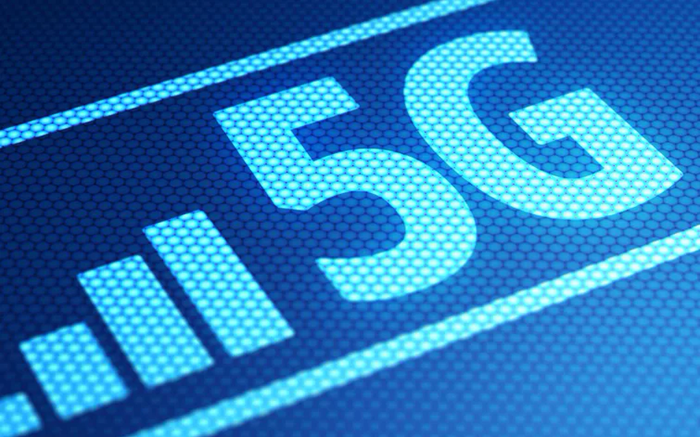Disclaimer: This isn’t a medical site and I’m not a doctor. All I can do is tell you the results of what I’ve read. If you’re concerned about your health, contact a real doctor.
All over the country, cellular providers are working to get 5G implemented. 5G cellular service will give regular folks amazing data speeds, up to 20 times faster than today’s cell service. It will enable things like self-driving cars, internet-monitored inventory, and it will push everything we do in our mobile lives to the next level. Assuming, of course, it’s safe to use.
There’s a certain outlying group of people who claim that cellular service causes cancer. They’re especially worried about 5G, because it has the potential to use frequency ranges that have never been used before for cellular. These higher frequencies are closer to microwaves and X-rays than today’s cellular but that doesn’t mean they’re the same. Let’s take a look at the details.
The three different types of 5G
There are three different frequency ranges which may be used for 5G cell service. They’re being rolled out in waves and it could be another two or three years, maybe more, before you’ll see all three in common use.
600MHz 5G
This is the first wave of 5G. It uses frequencies once reserved for television channels. You’ll see this come to most cities as soon as those TV channels are completely vacated. In some cities this has already happened. You’ll see the whole nation ready for 5G by next summer.
This sort of 5G will take new towers, but the technology is very similar to what’s being used now.
Millimeter-wave 5G
This is the one most of the cancer scares mention. Using new frequencies in the 18-40GHz band, millimeter-wave 5G will really open up new horizons for 5G. There’s so much bandwidth there, it’s hard to imagine it being a problem for a while. This is the real promise of 5G but it’s also scary for many people.
Because this frequency range is so different, millimeter-wave 5G will require all new towers. It’s estimated that these towers could need to be much more closely spaced than today’s towers. It’s possible — in a worst-case scenario — that you’ll need a tower every 250-500 feet rather than today’s spacing which is between 1 and 2 miles apart depending on the technology.
Millimeter-wave uses something much more like Wi-Fi than today’s cell signals. That whole new engineering level is needed to develop such super-high speeds at scale.
5G with today’s frequencies
Eventually, 4G and LTE will be phased out and today’s cell frequencies will be used for 5G. It will be a slow transition and you probably won’t noticed. They phased out 2G and most 3G data and you didn’t notice. Using these frequencies for 5G will mean that today’s cell boosters will work with 5G, which is good news.
Health concerns
Let’s say this up front: cellular signals are radiation. They’re very low levels of radiation, but they’re radiation. Then again sunlight is radiation, too. So are radio waves and TV signals. So are satellite signals. It’s all part of the “electromagnetic spectrum.” Not all radiation is bad and even the stuff which can hurt you generally has a harmful exposure level. There are safe levels of X-rays, and there are even safe levels of atomic radiation.
What is a safe level of exposure to cell signals?
That’s the real heart of the question isn’t it. It’s also the one thing we haven’t proven conclusively. Cell phones operate at fractions of a watt. This means they’re putting out about a tenth of the radiation from a typical night light. This amount of radiation of almost any kind is judged to be safe.
Even when millimeter-wave 5G comes into play, transmission levels from the phones won’t be much higher. Transmission levels from the cell tower itself can be as high as 500 watts, but keep in mind these towers are up high and due to the “rule of squares” the power from a distance of only 12 feet away is down to 25 watts. Also remember that this is the maximum broadcast power for a tower. Typically these are 100 watt towers meaning that at 12 feet away you’re getting 5 watts, about the same as an older flashlight.
While we don’t know yet what the long-term effects of cell signals are, the World Health Organization has, for now, said that there is no reason to think that cell signals as used today are unsafe. The FCC agrees as well.
You eat pickles
In a recent study on rats and mice, there may have been some link to health hazards to humans. This has led to some people characterizing cell service in “Group 2-B” meaning “possibly carcinogenic.” This is the same group that gasoline fumes are in, and you haven’t stopped driving. It’s also the same group that pickles are in. Chances are you eat pickles.
It is an unfortunate fact of life today that if you avoided everything that could potentially have some sort of negative impact on you, you wouldn’t be able to eat anything go anywhere, or do anything. In today’s world, just as in the past, you have to choose your path wisely and avoid what it is possible to avoid.
What about those groups of “concerned citizens?”
Hey folks, I like it when people get active in their communities. Even if I don’t agree with them, they’re trying. I would encourage each of you to find a cause that’s important to you and work toward it.
All that said, I think that people who are worried about the health impact of cell towers seem to rely on incomplete science. I can say that because there is no authoritative multiyear study yet. Cell phones are too new for that to have happened.
I recommend caution of course. No one should feel like their health is at risk because they want to make a phone call. However all the science we have so far just doesn’t support the claim that cell phones cause cancer. That may be just a temporary conclusion, but it’s the one supported by scientists all over the world the vast majority of the time. A few divergent studies do not make all the other studies invalid.
In the meantime the 5G rollout continues. For me it can’t come soon enough.





